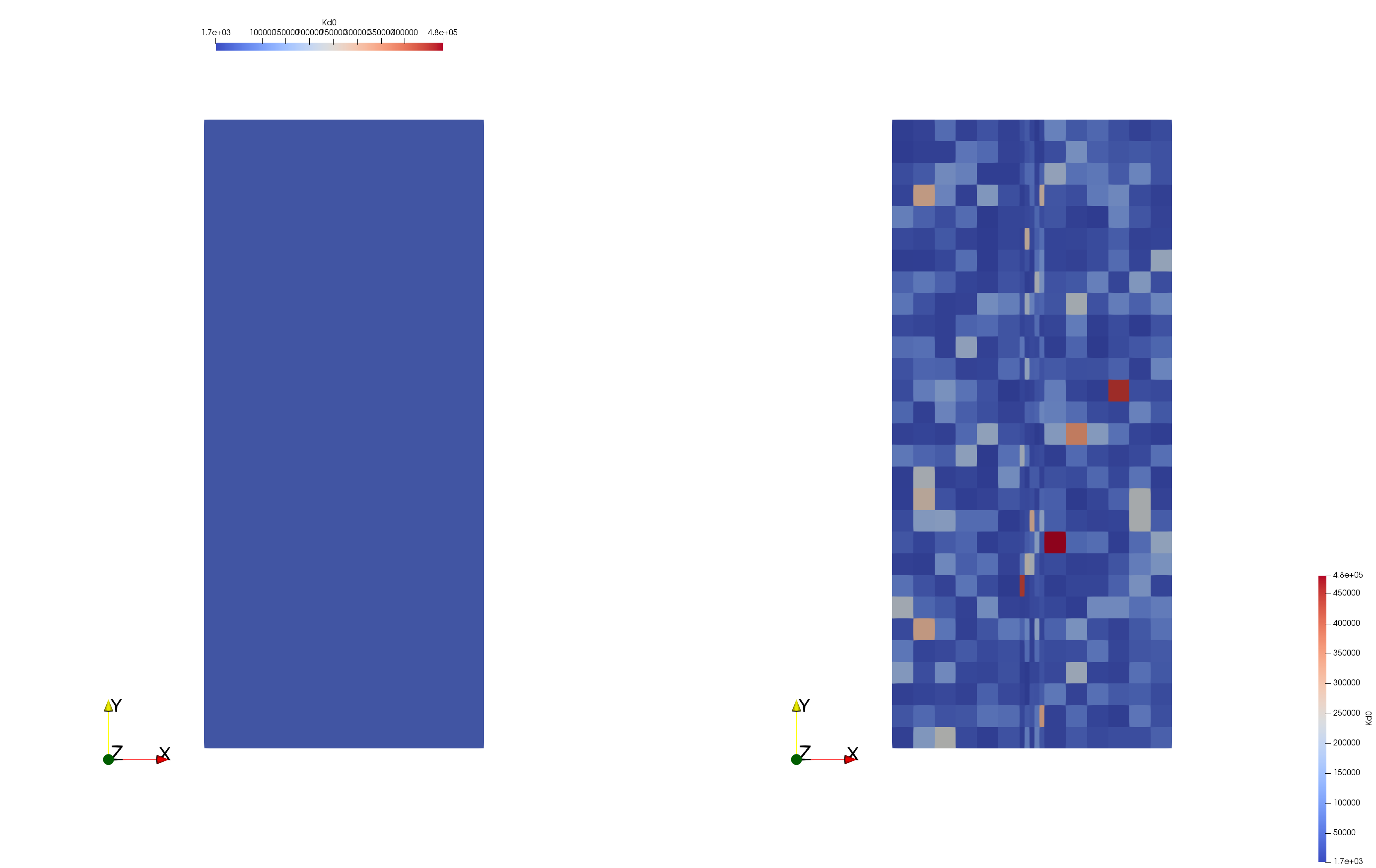速度ODE慎用analytical时间格式
-
参考 http://dyfluid.com/docs/multiphase.html 拉格朗日模型下的速度存在精确解。在OpenFOAM中也植入了
analytical,和Euler格式,后者对应的是欧拉隐性时间积分。在analytical做积分的时候,需要时间步长非常小,否则会导致速度过大。Euler格式也需要保证时间步长较小,但远大于analytical的时间精度要求。另一种方法是欧拉显性,目前在OpenFOAM中没有植入。下图中为使用Eulerian-QBMM计算的鼓泡床,左图为使用
analytical时间步长为2e-5的$\Kd$值,右图为使用analytical时间步长为5e-3的$\Kd$值。区别只在于时间步长。右图由于时间步长过大,导致粒子速度过大,进而雷诺数过大,进而$\Kd$过大,反过来进一步的影响粒子速度。
若要测试,也可以通过
DPMFoam模拟单个颗粒的运动,只包含重力,同时测试analytical在不同时间步长下的结果。同时需要注意,这里不是说
analytical不准确,而是需要注意调用analytical的时候关注下对应的时间步长。
-
下面是在Ansys Fluent理论指南中遇到的部分描述:
The analytic scheme is very efficient. It can become inaccurate for large steps and in situations where the particles are not in hydrodynamic equilibrium with the continuous flow. The numerical schemes implicit and trapezoidal, in combination with Automated Tracking Scheme Selection, consider most of the changes in the forces acting on the particles and are chosen as default schemes. The runge-kutta scheme is recommended of nondrag force changes along a particle integration step.
还需要进一步研究。有人见过相关文献么
